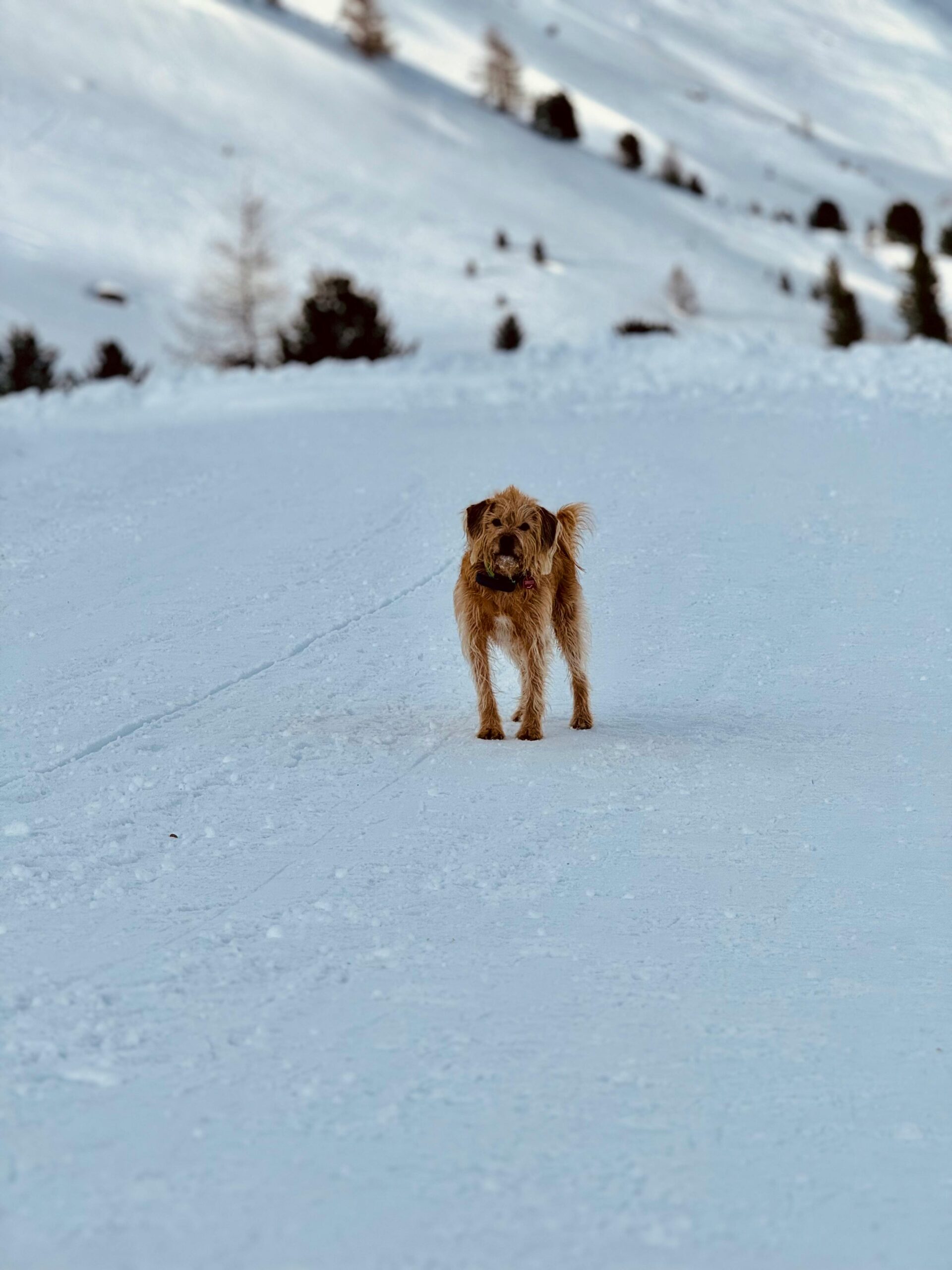Winter travel can be magical — snowy roads, cozy cabins, and hot drinks by the fire. But if your dog is along for the ride, that winter wonderland needs a little more prep. From frozen paws to emergency stops in blizzard conditions, there’s a lot to consider when you’re traveling with dogs in winter.
Whether you’re driving across the state or flying across the country, your dog’s safety and comfort should be at the heart of your plans. This guide will walk you through the must-knows — including dog emergency kit essentials, how to handle dogs and snow, and what to do if you’re suddenly caught in animal weather.
The Big Question: Is It Safe to Travel with Dogs in Cold Weather?
The short answer? Yes — but only if you’re properly prepared. Dogs can enjoy winter travel just fine, but they rely on you to keep things safe and warm.
Unlike people, dogs can’t tell you when they’re cold or uncomfortable. You need to know the signs and prep for everything from icy paws to wind chill. Understanding cold weather animals is step one in keeping your dog happy on the move.
Before You Leave: Prepping for a Winter Trip with Your Dog
Schedule a Vet Check
Start with a routine checkup. Make sure your dog is healthy enough for travel, especially if they’re a senior, a puppy, or have a chronic condition. Ask your vet about cold-weather concerns and double-check vaccination records — you’ll want copies in your dog emergency kit.
Pack a Winter-Ready Dog Emergency Kit
Emergencies don’t wait for better weather. If your car breaks down or your flight gets delayed, your dog still needs to eat, stay warm, and be safe.
Your emergency kit for dogs should include:
- 3–7 days of food and bottled water
- Collapsible bowls
- Warm blanket or travel bed
- Dog coat or sweater
- Booties for icy sidewalks
- Extra leash and harness
- Waste bags
- Medications
- Vet records and ID copies
- Favorite toy or comfort item
Label everything and keep it in a sturdy bag. You can buy a dog rescue kit or build your own. Either way, make it grab-and-go.
For bonus preparedness, check out a red cross emergency kit or a ready rescue for dogs setup that covers both medical and comfort needs.
On the Road: Traveling by Car with Your Dog in Winter
Is It Ever Safe to Leave a Dog in the Car in Winter?
Let’s settle this: leaving your dog in a car in winter can be dangerous. Cold cars lose heat fast, especially when temperatures drop below freezing. Small breeds, short-haired dogs, and seniors are at even greater risk.
Unless your car stays running with a safe heat source and proper ventilation — don’t leave your dog alone.
Cold-Weather Driving Tips for Dog Owners
- Keep your dog survival kit in the trunk or backseat
- Line the seat or crate with fleece or thermal blankets
- Use a crash-tested carrier or dog seat belt harness
- Make pit stops every 2–3 hours to let your dog stretch and hydrate
- Never let your dog run loose at rest stops — icy pavement and unfamiliar scents can lead to accidents or runaways
If your route includes snow-covered regions, consider booties to protect your dog’s paws from ice melt and frostbite.
Dogs and Snow: What’s Safe and What’s Not?
Snow can be fun — but it comes with risks. If you’re wondering can dogs play in snow? the answer is usually yes — but you have to know your dog’s limits.
Signs It’s Too Cold for Your Dog:
- Shivering
- Lifting paws or refusing to walk
- Slowing down or whining
- Seeking shelter
- Ice forming on fur or whiskers
Walking dogs in cold weather should be short, safe, and supervised. Even if your dog loves the cold, limit outdoor exposure and keep moving to generate body heat.
Can Dogs Walk in Snow or on Ice?
Yes — but with caution. Use booties to prevent salt burns or cuts from sharp ice. Clean and dry paws after every walk. And remember: is it safe for dogs to walk in snow? Only if temperatures aren’t dangerously low and the walk is short.
For more delicate breeds, it’s better to walk dogs in cold weather when the sun’s up and the wind is low. Nighttime walks in single-digit temps? Probably a no-go.
Flying with Dogs in Winter: What You Need to Know
Flying with pets is tricky in any season — but winter adds delays, cold cargo holds, and airport chaos.
Flying With a Dog Tips:
- Book direct flights when possible
- Choose pet-friendly airlines with temperature-controlled cabins
- Use an airline-approved carrier and line it with warm bedding
- Attach clear labels with your contact info
- Pack a dog emergency evacuation kit for your carry-on: food, water, meds, records, and a calming item
Is It Cruel to Take a Cat or Dog on a Plane?
This depends on the pet. For animals used to travel, flying can be totally fine. But if your dog or cat panics in carriers or gets motion sickness, a flight can be overwhelming.
If you’ve been wondering is it cruel to travel with a cat or take a cat on a plane? the answer depends on how prepared you are. For dogs too, the more exposure they’ve had to carriers and travel sounds, the calmer they’ll be. Training is key.
If flying isn’t necessary, it’s often kinder to keep your pet at home with a trusted sitter.
Emergency Scenarios: Be Ready for Anything
Imagine your car skids off a snowy road. Or your cabin loses power. Or a snowstorm grounds your flight and you’re stuck overnight with your dog in a strange town.
Animal weather — storms that directly impact pets — requires fast action. This is where your prep and save doggie disaster kit shines.
Be sure it includes:
- A flashlight or headlamp
- Pet-safe hand warmers
- Portable water filter
- Extra food
- First-aid supplies
- A full printed emergency plan
In some areas, blizzards or ice storms are more dangerous than hurricanes. Your weather dog (and weather-ready self) should always be one step ahead.
Animals in the Cold: Know Your Breed
Not all dogs handle cold the same. Some are true cold weather animals — think Huskies, Malamutes, or Bernese Mountain Dogs. Others — like Greyhounds or Chihuahuas — are animals freezing at 40°F.
Before traveling, know your dog’s limits.
Cold-Resistant Breeds:
- Thick double-coated dogs
- Snow-breeds (Spitz types)
- Dogs built for northern climates
Cold-Sensitive Dogs:
- Small breeds
- Short-coated dogs
- Elderly dogs
- Dogs with joint issues or health conditions
No matter your breed, always watch for frostbite signs: pale or grayish skin, stiffness, or limping. And never assume that just because dogs “like the cold,” they can’t be hurt by it.
Bonus Tip: Watch for Signs of Hypothermia
Dogs can get hypothermia quickly, especially in wet or windy conditions.
Symptoms include:
- Weakness
- Shallow breathing
- Stiff muscles
- Dilated pupils
- Collapse
Wrap them in a warm blanket and seek veterinary help immediately.
Final Checklist for Winter Dog Travel
- Schedule a pre-travel vet check
- Pack a full dog emergency kit
- Dress your dog for the cold (coat, booties, blanket)
- Keep food, water, and ID close at all times
- Don’t leave your dog in cold cars — ever
- Know when it’s too cold to walk
- Practice calm carrier travel for flights
- Stay alert to animals and the weather
- Always have an emergency exit plan
Wrap-Up: Traveling Smart Means Traveling Safe
You don’t have to cancel your winter plans just because it’s cold — but you do need to think ahead. With a little preparation, your dog can stay just as safe and cozy on the road as they are at home.
Whether you’re dealing with snowdrifts or flight delays, your dog survival kit and dog safety tips can make all the difference.
Traveling with your dog in winter can be an adventure. Just make sure it’s a safe one — paws, fur, and all.






